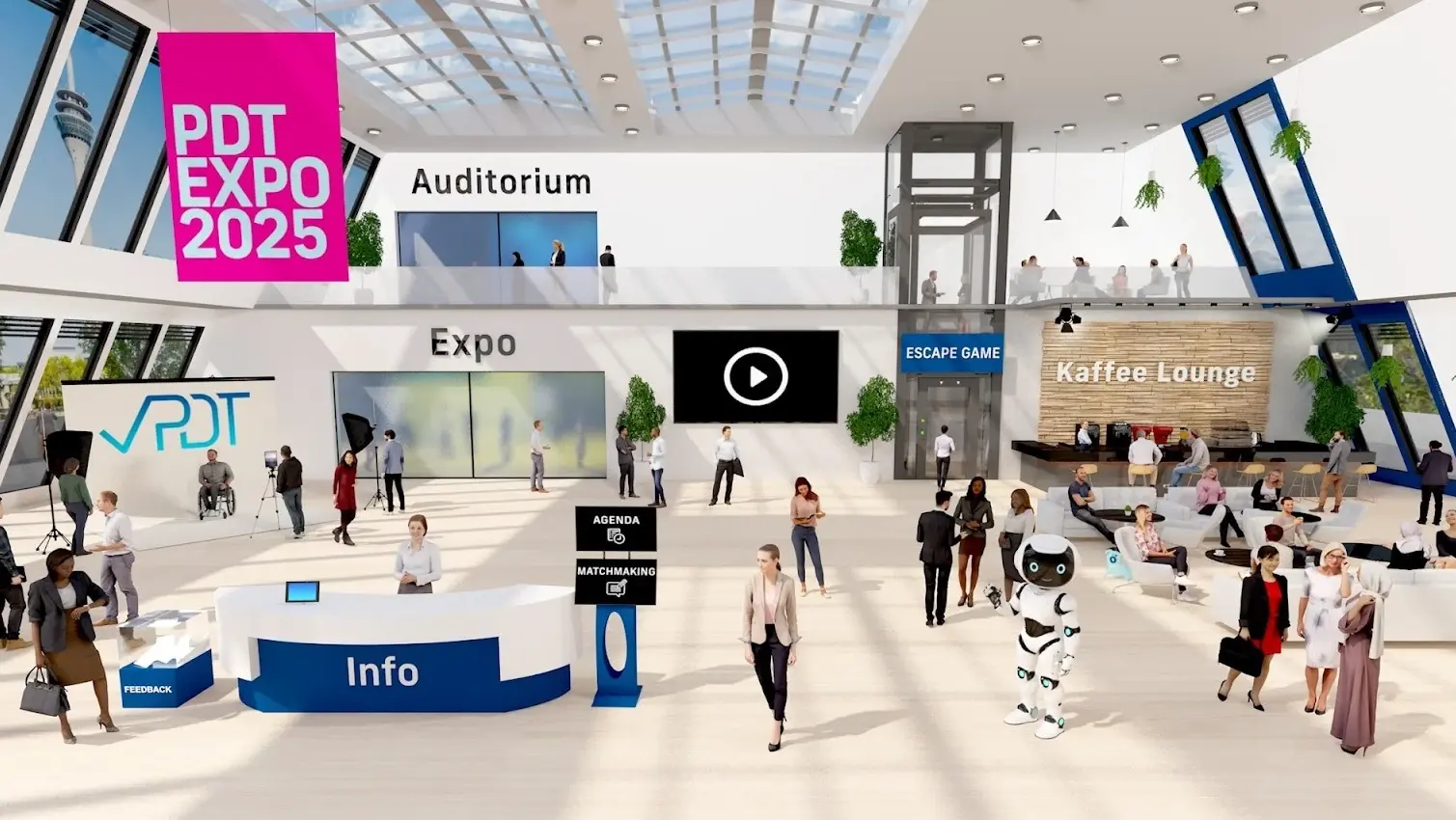Speaking on a webcast can be intimidating, even for experienced professionals. Small mistakes or lack of preparation can distract your audience and reduce engagement. But with the right guidance, you can help your speakers feel confident, present naturally, and make a strong impression. This guide walks you through the essential steps to prepare, engage, and rehearse for a smooth and compelling webcast experience.
Your webcast is only as good as the people presenting it. You can have the best platform, sharp visuals, and a perfect connection, but if your speakers lose the audience, the whole event suffers.
Many speakers are experts in their field but not in presenting to a camera. Without the right preparation, they may sound flat, speak too quickly, or avoid eye contact. This is normal. Presenting online is different from speaking in a room.
The good news? You can help them. With the right guidance, your speakers can go from nervous and hesitant to confident and engaging. In this blog, we will give you simple, practical steps to set them up for success.
The Pre-Flight Tech Check Your Speakers Need
A smooth webcast starts before the camera turns on. A quick, structured tech check prevents common issues and helps your speakers feel in control. Here’s what to cover:

1. Lighting
- Sit facing a window or use a soft light source.
- Avoid bright light behind you, it will make your face dark.
2.Audio.png?width=294&height=165&name=A_confident_professional_speaking_into_a_webcam_at_2025-08-15%20(1).png)
- Use a headset or USB microphone for clear sound.
- Test for echo and background noise before the session.
3. Background
- Choose a clean, simple backdrop with no distractions.
- Virtual backgrounds are fine if lighting is even and the image is professional.
4. Platform Familiarity
- Show how to share slides, start polls, and use the Q&A function.
- Let speakers practise clicking through features so it feels natural.
5. Internet Connection
- Use wired internet if you can.
- Close any apps or browser tabs that use bandwith.
Setting up a webcast may seem simple, but getting the timing, content, and tech right takes planning. For a full step-by-step guide, check out our blog on preparing the perfect webcast.
Techniques for Engaging a Virtual Audience
Instead of just delivering a message virtual speakers are competing for attention in a world full of distractions. In a virtual setting, there’s no audience energy to feed off, and no quick read on whether people are engaged. That means connection has to be intentional. Here’s how you can guide your speakers to hold attention and keep viewers involved from start to finish.
Look into the Lens.png?width=294&height=165&name=A_confident_speaker_mid_webcast_looking_professio_2025-08-15%20(1).png)
The camera is the audience’s window. Encourage your speakers to imagine a person on the other side. Speaking into the lens - not at the screen - creates a sense of eye contact that feels personal for viewers.
Control the Pace
Fast talk can overwhelm people, while a monotone loses them. A steady pace, paired with clear pauses, lets ideas land. Suggest practising with a timer to find a natural rhythm. Changing tone and emphasis also helps maintain energy.
Use the Space
Even in a tight camera frame, posture and gestures make a difference. Sitting upright with open shoulders projects confidence. Simple, intentional hand movements within the frame can underline key points without distracting.
Bring the Audience In
Interaction stops your webcast from feeling like a one-way broadcast. Plan where polls, short questions, or Q&A breaks will fit naturally into the talk. Encourage speakers to read and respond to chat comments during transitions or pauses - it signals that audience input matters. Speaking into a camera can feel strange when you can’t see your audience’s faces or reactions. If you want tips on connecting with this ‘invisible audience,’ check out our guide here.
Make it Human
Facts and slides are important, but stories and real-life examples are what people remember. Encourage speakers to weave in short anecdotes or analogies to make content relatable. Use jargon only if you’re sure your audience understands it; otherwise, keep language clear and simple.
When speakers connect on a human level, they make the webcast feel less like a presentation and more like a conversation. That’s when audiences stay engaged and retain what they’ve heard.
The Rehearsal Run-Through: What to Practise
A rehearsal is more than checking the tech. It’s where your speakers get comfortable with the flow, transitions, and timing of their session. Aim for a 30-minute run-through that covers these steps:
Step 1 - Set the Agenda
Start by telling your speakers what you’ll practise. This keeps the session focused and prevents it from drifting into unrelated topics.
Step 2 - Open Strong
Have each speaker practise their first two minutes. This is when nerves are highest and first impressions are made. A confident start sets the tone for the rest of the webcast.
Step 3 - Walk Through the Content
Go through the presentation at a relaxed pace. Let speakers get used to slide changes, transitions, and any media clips they’ll use.
Step 4 - Practise the Handovers
If multiple speakers are involved, rehearse how they’ll pass the spotlight between each other. Smooth handovers prevent awkward pauses or confusion.
Step 5 - Run a Mock Q&A
Ask a few sample questions, including one that’s challenging. This helps speakers practise concise answers and handle unexpected topics without panic.
Step 6 - Check the Timing
Make sure the content fits within the slot. If it runs long, identify where to trim so the live delivery stays on schedule.
Step 7 - Talk Through a Backup Plan
Agree on what to do if something goes wrong - like slides not loading or audio cutting out. Knowing the plan reduces stress in a live situation.
By the end of the rehearsal, your speakers should feel more confident, know exactly what to expect, and be ready to deliver without hesitation when it counts.

Conclusion
A webcast runs best when the speakers are well prepared. When you give your speakers the right preparation, you help them feel confident, stay focused, and connect with the audience. Using the right platform makes your webcast run smoothly and keeps your audience engaged. For a closer look at the must-have features of a professional webcast platform, see our detailed guide here.
A simple tech check avoids preventable problems. Clear guidance on engaging a virtual audience makes the presentation feel alive. And a focused rehearsal turns nerves into readiness.
Investing this time before the webcast pays off during the event. Your speakers will look and sound their best, your audience will stay engaged, and your message will land the way you intended.
.png)





